Weather should always be a significant consideration whether you’re going on a day hike or a multiday trek. Bad weather can upend your trip or lead to severe illness.
Every year, hikers and campers die because they aren’t prepared for the weather that comes their way.
Cold weather is a severe health risk and determines whether you can successfully complete your hike. When it’s cold outside, the weather can penetrate clothing and make things wet.
Ask any hiker, and they’ll probably tell you that they’d much rather be burning hot than freezing cold.
Buying and wearing the proper gear is crucial to hiking in 30°F weather. The right clothing and equipment will keep you warm and protect you from the elements.
You need the right balance between what stays dry and what maintains your body heat.
If you’re a novice hiker looking to push yourself a bit more, or you’re more experienced but looking for some weather-appropriate gear, we’ve put together this list of what to wear for low-temperature hiking.
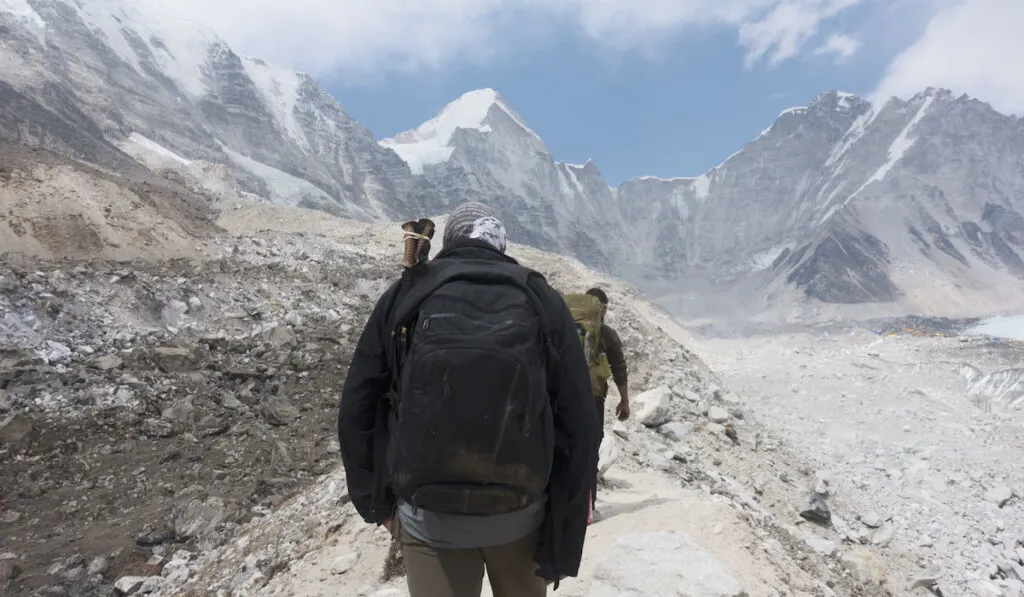
Table of Contents
The Key Items You Need to Stay Warm
The clothing you buy to hike in 30°F weather depends on a few things.
You need to consider:
- The difficulty of your hike.
- How long is the hike?
- Whether it will rain or snow.
- If you’re overnighting.
- Road safety.
When you know what conditions you’ll be dealing with, you can start shopping for what to wear.
Here’s what you should get started with on your shopping list.
Thermal Jacket or Zip-Up Hoodie
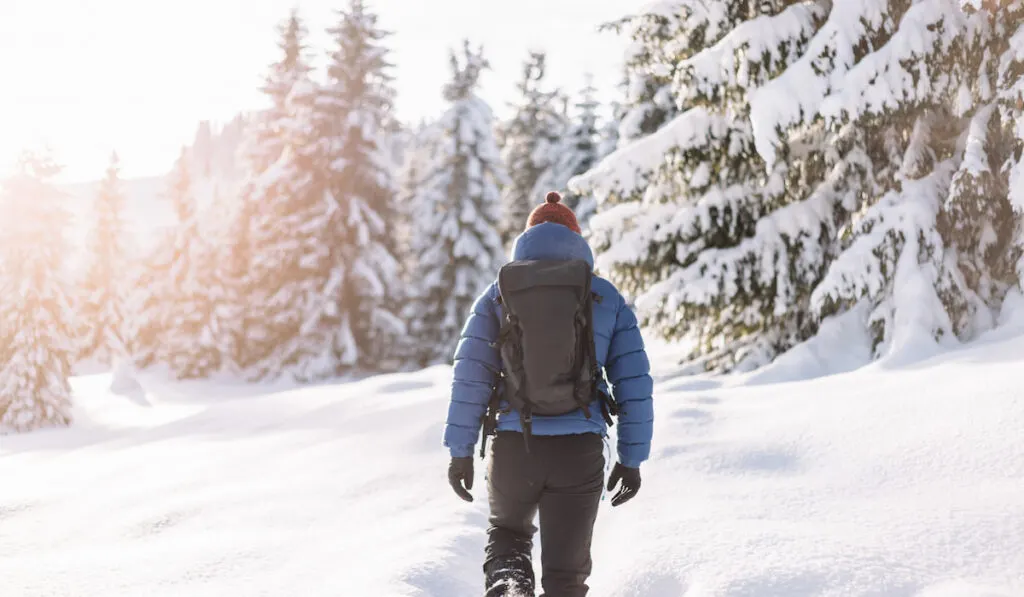
When you’re hiking in cold weather, you need to focus on layers.
However, sometimes you feel hot when you are walking vigorously, and you may need to shed some outer layers. The thermal zip-up is the versatile piece of warm clothing you need.
The right thermal zip-up jacket or fleece will do the trick to keep you comfortable when you’re sweating while walking up a hill or under direct sunlight.
You won’t necessarily want to strip down to a t-shirt or anything, so you’ll need an in-between for when it’s too hot or sunny.
Wind-Breaking Outer Jacket
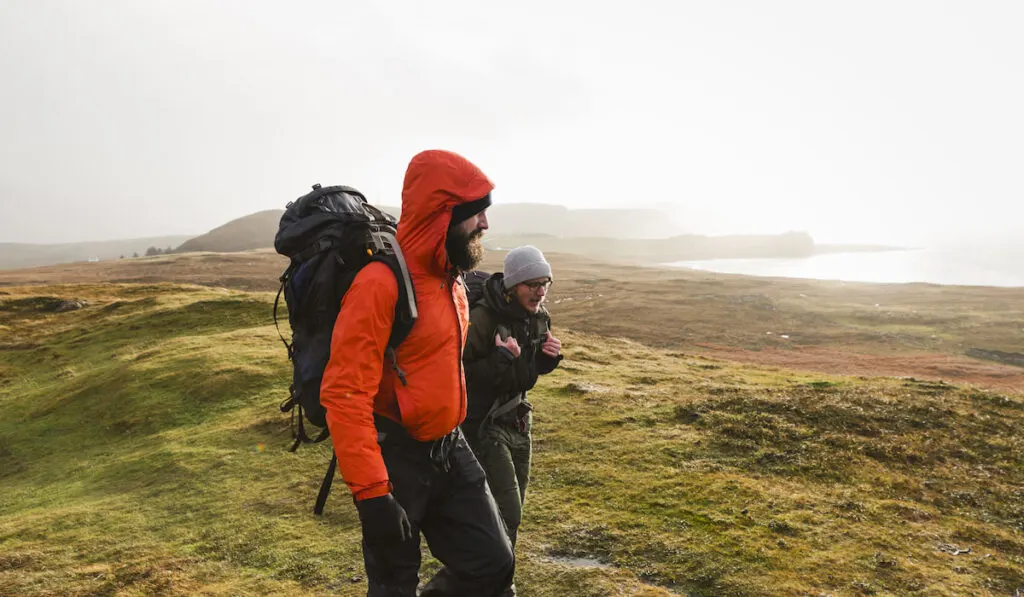
The wind is bone-chilling in very cold weather. It can make things feel so much more frigid than they actually are.
That’s why you definitely need a good-quality windbreaker jacket that provides warmth.
These days, you can find a variety of premium or affordable windbreakers online or at your local outdoor goods store.
So try some on, and find one that fits comfortably over your zip-up and whatever shirts you’re wearing underneath.
Ideally, the windbreaker will have a hood and zips up to cover half of your face.
When you’re breathing out of your mouth as you hike, your breath becomes wet and cool and makes your chin and mouth area feel extremely cold. It’s easy for it to turn red and start feeling sore in just a few minutes.
When choosing the right jacket, it’s wise to opt for something lightweight in case you need to take it off and stick it in your backpack or wrap it around your waist.
That’s also why buying a good-quality fleece or zip-up for underneath is so important.
Pants

Don’t forget about the bottom half of your body. Your core holds most of your body heat, so that’s where you’ll want to focus most of your attention.
The right pants will stop the wind from getting underneath your jacket and into your body. Your pants should also keep you dry if you’re hiking in the rain or snow.
For pants, you’ll want to either wear a combination of sweatpants (or thermals), and snow pants (to stop water and the wind), or you can buy insulated snow pants and just wear some light shorts underneath.
Too many layers on the bottom will slow you down and make you feel too hot once you start heating up on your hike, so be very careful about wearing pants that are too heavy.
A Warm Hat

You’ve probably heard somewhere that a lot of your body heat escapes through your head. Unfortunately, it’s true, and the right hat will make managing your body temperature a lot easier.
For this reason, a good-quality wool beanie will typically do the trick when hiking in 30-degree weather.
You can take it off when you get a bit warm and stick it in your pocket. Then, when it’s cold, the beanie does a terrific job of keeping your head and ears warm.
You can pull it down farther when things are especially cold or roll it up to let your head breathe a bit.
Socks
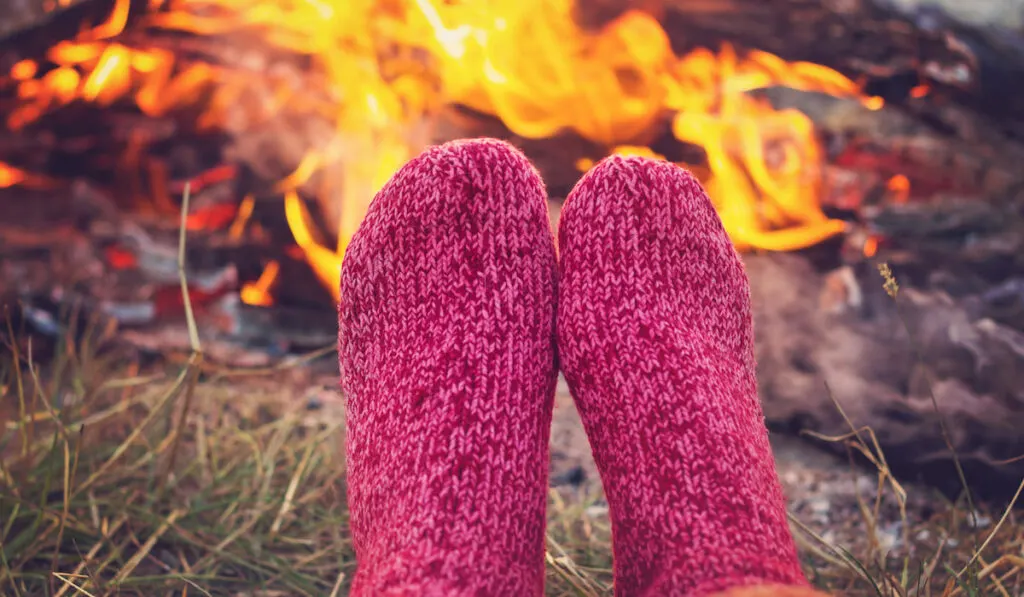
Wool socks work great in colder weather conditions because they stay warm, fight off odors, and do a good job staying dry.
Your toes usually need special attention on colder hikes. Once your feet start to feel the sting of cold weather, it’s hard to keep going.
Cold toes are also a potential health issue, so you need to pay attention to how they feel and keep them warm at all costs. If necessary, you can always double up on socks for added protection.
The Right Shoes
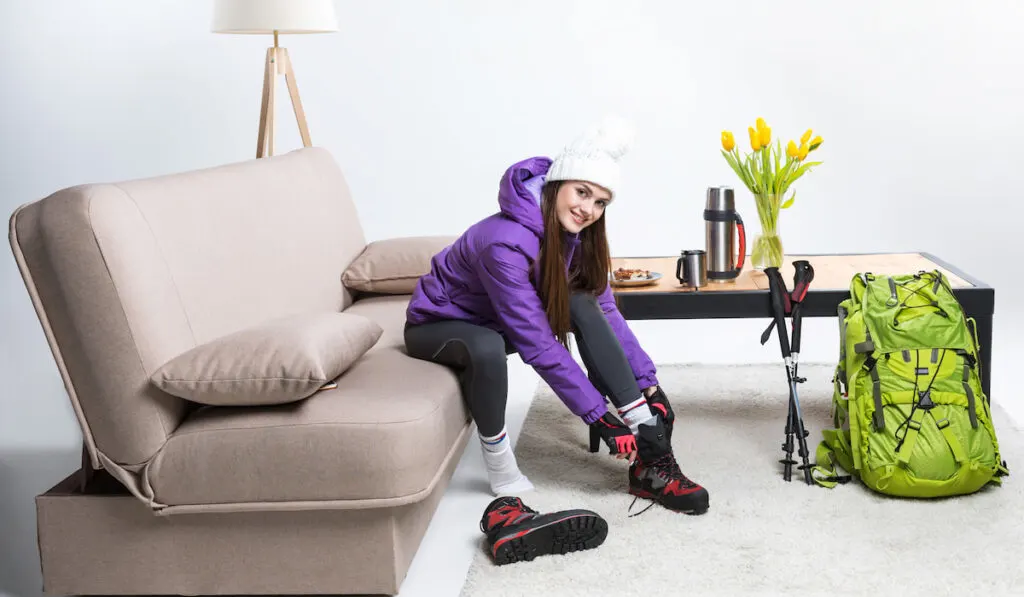
Whether you prefer trail running shoes, hiking boots, or some other footwear, you need to be sure they are up to the task of keeping you moving when things are cold outside.
In addition, your footwear should be loose enough to fit two pairs of socks, if necessary, and they should dry quickly when they get wet.
You can buy boots with wool or fleece insulation, but just remember that added warmth will also typically mean more weight you have to pick up with every step.
Our advice is to wear relatively normal hiking shoes and control your temperature best by focusing on the socks you wear.
Gloves
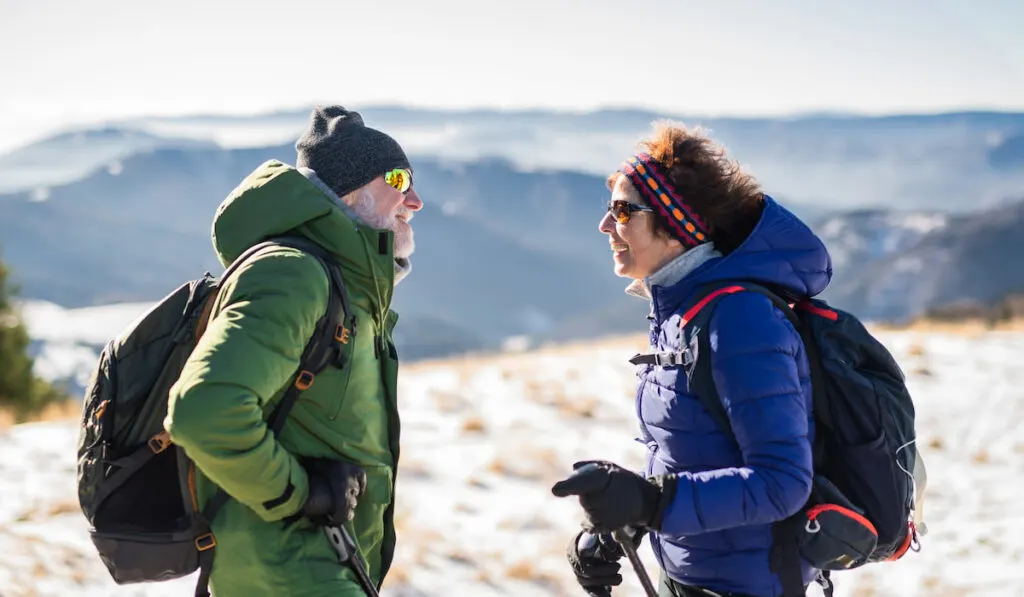
Your hands and fingers are going to get cold. Don’t make the mistake of hiking in cold weather without gloves.
Your gloves’ insulation level will depend on just how cold things get, but in most 30-degree hikes, you can get by with some thin or medium gloves.
Heavy gloves, like what you would wear skiing, will only leave your hands sweating. They are also often too bulky to help you grab ahold of trees or find things in your backpack when on a hike.
Buy nimble and flexible gloves to keep you stable on the trail without having to take them off. If you need help, ask an associate at an outdoor gear store to point you in the right direction.

Layering in Cold Weather
Probably the most important advice we can give about what to wear when hiking in 30-degree weather is to use layers.
If you buy a thick jacket or a hoodie that’s too bulky, you’re putting too many eggs in one basket.
On a serious hike where you’re building up a sweat, you’ll be dying to take it off and then freeze when it’s not on. So you’ll constantly be either too hot or too cold.
With layers, you get the versatility you need to adapt to how your body feels and when the temperatures outside change.
Layers give you options.
For example, it may be hotter at lower altitudes on your hike. However, once you start going up, things tend to get a bit chilly.
So, instead of buying one or two incredibly warm items, spend money on high-quality lightweight layers that you can take on and off.

Other Things to Bring on a Cold Weather Hike
In addition to what you wear, staying warm on a cold-weather hike is much easier with some extra gear.
For example, you can buy hand warmers that will fit in your gloves, pockets, or boots while walking.
Hand warmers take a while to get started, but once you shake them around and stick them in between your socks and the toe end of your shoe, they will help keep your feet warm.
In addition, when you’re out in colder temperatures on a hike, bringing along a balaclava is a terrific way to keep your face and cheeks warm. It will make up for any spots that your hoodie or jacket doesn’t cover completely.
You can usually find balaclavas at ski supply stores or in a big box store near you.
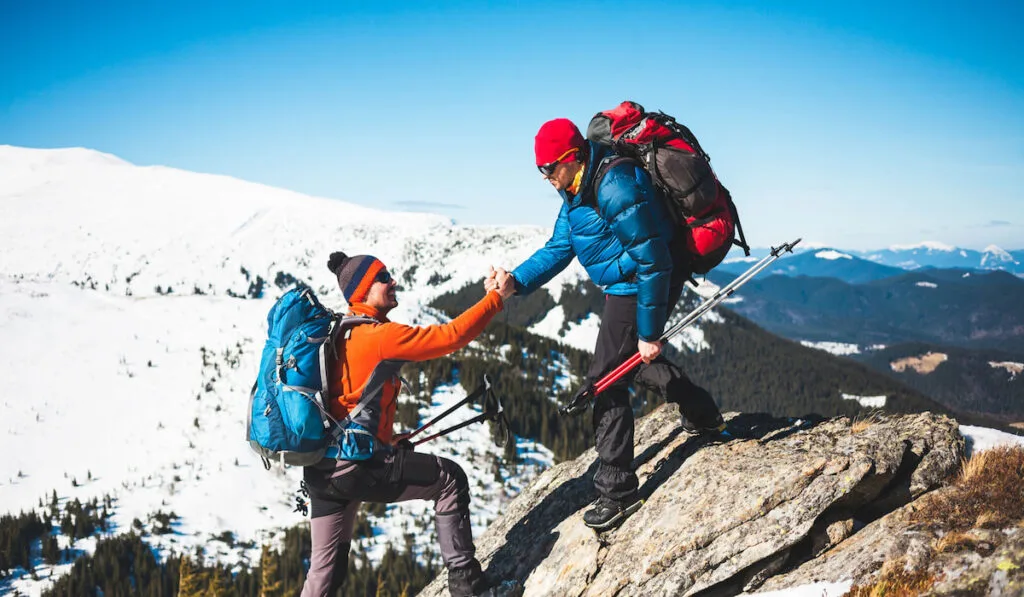
Fit Is Important
You’ll probably only keep wearing clothes you feel comfortable in. On top of staying warm, you want clothes that will keep you cozy while you walk for miles.
The most important thing you can do when buying hiking gear is to try it on and ensure the fit is correct.
You may think slight discomfort is no big deal when you can’t find your exact size in a jacket you love. However, you’ll start feeling that tightness at mile eight and wish you had gotten the right one.
If you have some more time before you start buying clothing, read online reviews to see what other hikers are saying. Specifically, look for people who spend time in lower temperatures, like 30-degree weather, to find the best possible stuff.
